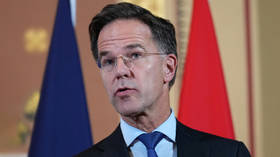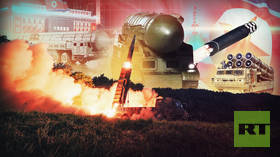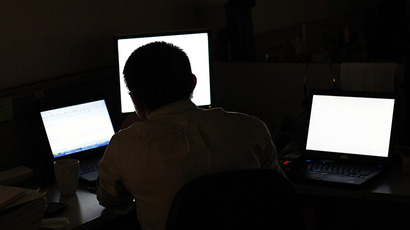'Doomsday clock' still at five to midnight, scientists warn
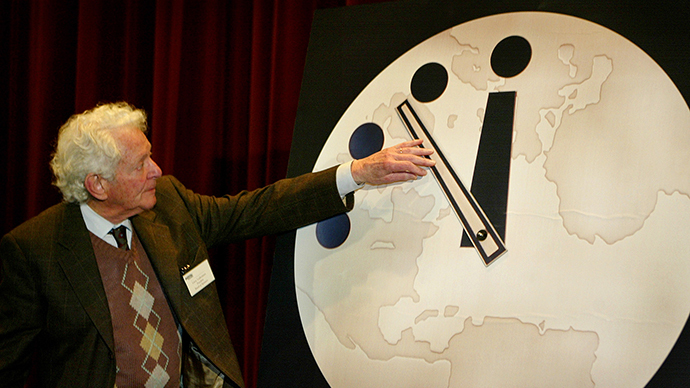
The doomsday clock – a theoretical device that purports to tell us how close we are to a nuclear apocalypse – has frozen at five minutes to midnight, unchanged from last year. Physicists tell the head of the UN there is little reason to move it back.
The visual metaphor has held its appeal for more than 60 years now. The hands of time are moved in accordance with the analyses of a special board of scientists who ponder international threats, especially those having to do with nuclear armaments.
While a team of physicists writing to UN Secretary-General Ban Ki-moon noted some positive developments in 2013 – including successful talks on Iran’s nuclear program, and the fact that overall there has been a reduction in nuclear armaments worldwide – they decided there was still little hope for jubilation:
"As always, new technologies hold the promise of doing great good, supplying new sources of clean energy, curing disease, and otherwise enhancing our lives. From experience, however, we also know that new technologies can be used to diminish humanity and destroy societies," wrote the scientists on the board.
"We can manage our technology, or become victims of it. The choice is ours, and the Clock is ticking," they added.
The clock was first launched in 1947 by the editors of the Bulletin of Atomic Scientists. The wife of one of the researchers on the team, Martyl Langsdorf, had offered her artistic rendition of the object.
Back in 1947, the clock had showed seven minutes to midnight. In 1953, things looked the most critical in the clock’s entire history to date: they showed two minutes to midnight, following the US and Russian nitrogen bomb tests, spaced only nine months apart.
Meanwhile, 1991 was in the minds of the scientists the safest year: the Cold War had ended, and there was thankfully an agreement between the world’s then-superpowers, the US and the USSR, on reducing strategic nuclear arsenals.
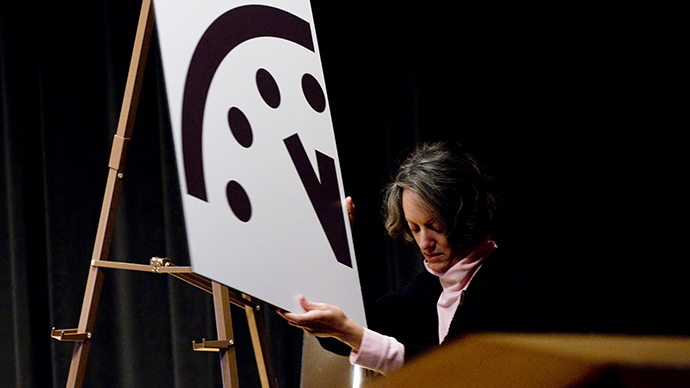
All in all, the clock’s hand changed its position 20 times. In 2012 it moved to five minutes to midnight, which symbolizes hypothetical nuclear annihilation.
The scientists believe that Russia and the United States must continue to make progress on eradicating their nuclear arsenals and further negotiate.
Specifically, once there [at the table], “they should take the courageous steps needed to further shrink their nuclear arsenals, to scrap their deployment of destabilizing missile defenses, and to reduce the alert levels of their nuclear weapons.”
They were also not too happy about China, India and Pakistan making strides in the opposite direction with their military developments – including the stockpiling of fissile materials.
The group thought that the Fukushima catastrophe would wake the world up to the necessities of moving away from nuclear energy, but complained that only Germany and Switzerland really made huge strides, while countries like the United Kingdom are discussing the construction of new nuclear facilities yet.
The group is also unhappy with the progress the UN has made in the field of climate sustainability and negotiations on policies in that area. The threat of global warming, they say, is still real. After all, since 2007, they claim the clock reflects not only nuclear catastrophe, but also climate change.
The physicists also wrote that, while there have been leaps in the development and spread of new technologies, the world is not growing fast enough to catch up to them and control them. Amongst them are breakthroughs in the fields of biology and cybernetic technologies – such as drones.
They believe that new bodies must be set up for dealing with all emerging technologies.
“The revolution in information technology is accelerating, and the consequences of such broad and fast-paced technological change cannot be foreseen. Some of the results of this revolution, such as military robotics and cyber warfare, will challenge international law and the norms of war, much as nuclear weapons do. These scientific advances require serious attention and policy action—before our newest technologies fuel another senseless and dangerous arms race.”








